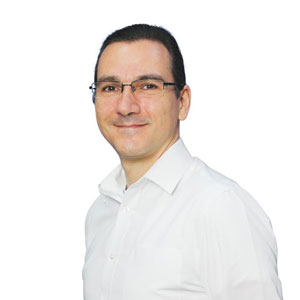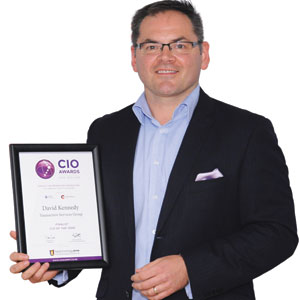THANK YOU FOR SUBSCRIBING

The Impact of Smart Infrastructure on Growing Cities
Scott Edward Sidhom, Manager Infrastructure Planning, Liverpool City Council


Scott Edward Sidhom, Manager Infrastructure Planning, Liverpool City Council
Liverpool is one of Australia’s fastest-growing Local Government Areas (LGA), with its population projected to exceed 350,000 by 2046. The city is undergoing major transformation, including development of the Western Sydney International (Nancy-Bird Walton) Airport, Bradfield Aerotropolis, and regeneration of the Liverpool City Centre.
Council faces significant financial and resourcing challenges in managing its $3.8 billion infrastructure portfolio, expected to nearly double to $7 billion by 2030. This includes public roads, drainage, parks, and buildings infrastructure. However, these challenges present a opportunity to leverage smart infrastructure for efficiency, sustainability, and enhanced community experience.
Smart infrastructure presents an opportunity to address urban challenges, enhance service delivery, and create sustainable, tech-enabled communities.
Smart technology can optimize operations through data-driven planning tools like digital twins, pedestrian sensors, and video analytics. Automated data collection, smart lighting, and soil moisture monitoring can reduce costs and improve resource allocation. Public safety and environmental sustainability can also be enhanced through digital flood monitoring, EV charging points, and urban heat tracking.
Smart Technology in Action: Key InitiativesTo support the Liverpool City Centre’s transformation, Council has trialed various smart infrastructure initiatives, including pedestrian, parking, and tree sensors. • Pedestrian Sensors Funded through the Australian Government’s Smart Cities and Suburbs Program, this project counted pedestrian and vehicle movements using Meshed’s LoRaWAN network and camera technology. The data collected will inform street upgrades and transport planning. •Parking Sensors In collaboration with Transport for NSW, Council trialed parking sensors and digital signage to improve parking efficiency and reduce congestion. The data collected will help shape future transport and parking strategies. • Tree Sensors Council deployed temperature sensors to compare shade levels from various tree species and in trees versus built structures. The findings showed tree shade was consistently cooler, and the findings influenced tree species selection in the city centre, to enhance walkability.
The primary challenge in adopting smart infrastructure is cost. Rapid urban development and extreme weather events have increased the demand for essential infrastructure upgrades and renewals, stretching Council’s capital and maintenance budgets. Rising material and labor costs have further impacted Council’s financial planning.
Due to budget constraints, priority is given to essential projects like road repairs and flood mitigation works, making smart infrastructure more challenging to fund. To counter this, Council actively pursues grants and partnerships for smart technology initiatives.
Another challenge is the current availability of proven smart solutions. Many products are still in early development or implementation, making it difficult to assess long-term viability. For example, a trial of smart bins in the Liverpool City Centre revealed several challenges, including:
• Effectiveness: Useful in remote locations but less beneficial in high-traffic areas requiring frequent servicing anyway.
• Vandalism: Solar panels on bins were easily damaged, leading to costly replacements.
• Hygiene: Many bins require manual opening via. handles, deterring public use.
• Cost: Higher upfront and replacement costs than standard bin enclosures.
• Functionality: Blocked sensors, limited openings and lesser capacity caused operational inefficiencies.
These insights highlight the importance of product evolution and thorough evaluation before large-scale smart infrastructure adoption.
Best Practices for Implementing Smart InfrastructureFor government and industry professionals looking to integrate smart infrastructure, the following steps are crucial:
1. Conduct Research – Assess available technologies, consult suppliers, and learn from other Councils’ experiences.
2.Trial Before Investing – Pilot new technologies in small-scale deployments to evaluate feasibility and effectiveness.
3.Gather Feedback – Engage internal stakeholders and the public for insights on usability, maintenance, and functionality.
4.Analyze and Refine – Consider costs, aesthetics, and maintainability before committing to large-scale implementation.
Council has implemented a QR code-based survey system to gather public input on smart technology trials, ensuring data-driven decision-making.
The Future of Smart InfrastructureThe evolution of smart infrastructure is poised to revolutionize urban development. Key trends include:
• AI-driven automation– Enhancing infrastructure management, from data processing to safety compliance.
•Real-time geospatial data – Enabling intelligent traffic systems and efficient urban planning.
•Inter-governmental collaboration – Creating interconnected smart city ecosystems to optimize public services.
Global examples, such as Japan’s real-time emergency alerts and touchless technology, showcase the potential for smart infrastructure to improve public safety and operational efficiency.
ConclusionSmart infrastructure presents an opportunity to address urban challenges, enhance service delivery, and create sustainable, tech-enabled communities. While financial and technological challenges exist, careful planning, trials, and collaboration can enable successful adoption.
AcknowledgmentsSpecial thanks to former colleagues David Petrie and Charles Wiafe, and current colleague Emily Tinson, for their contributions to Liverpool City Council’s smart infrastructure initiatives.
Weekly Brief
I agree We use cookies on this website to enhance your user experience. By clicking any link on this page you are giving your consent for us to set cookies. More info
Read Also













